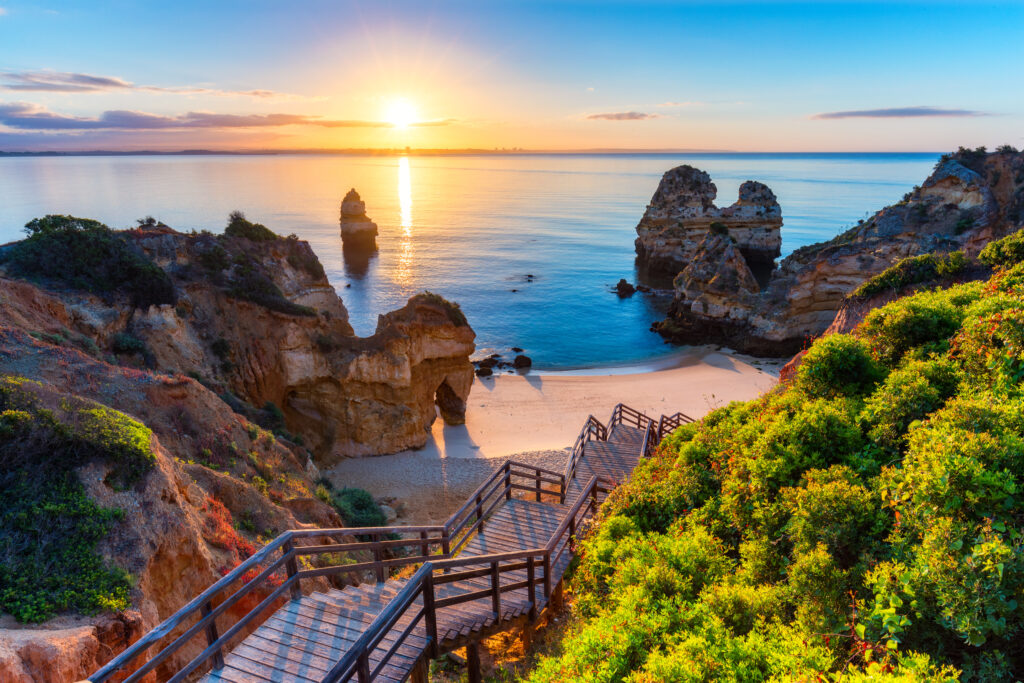
The Algarve, located in southern Portugal, is a coastal region renowned for its golden sandy beaches, spectacular cliffs and picturesque fishing villages. With its Mediterranean climate, breathtaking scenery and rich culture, the Algarve is a destination of choice for travelers seeking a change of scenery and adventure. In this article, we invite you to discover the 19 most beautiful places to visit in the Algarve. Whether you're a fan of idleness, water sports, hiking or gastronomy, you're sure to find what you're looking for in this region of a thousand and one treasures.
1. What to do in the Algarve Visit Faro, the capital
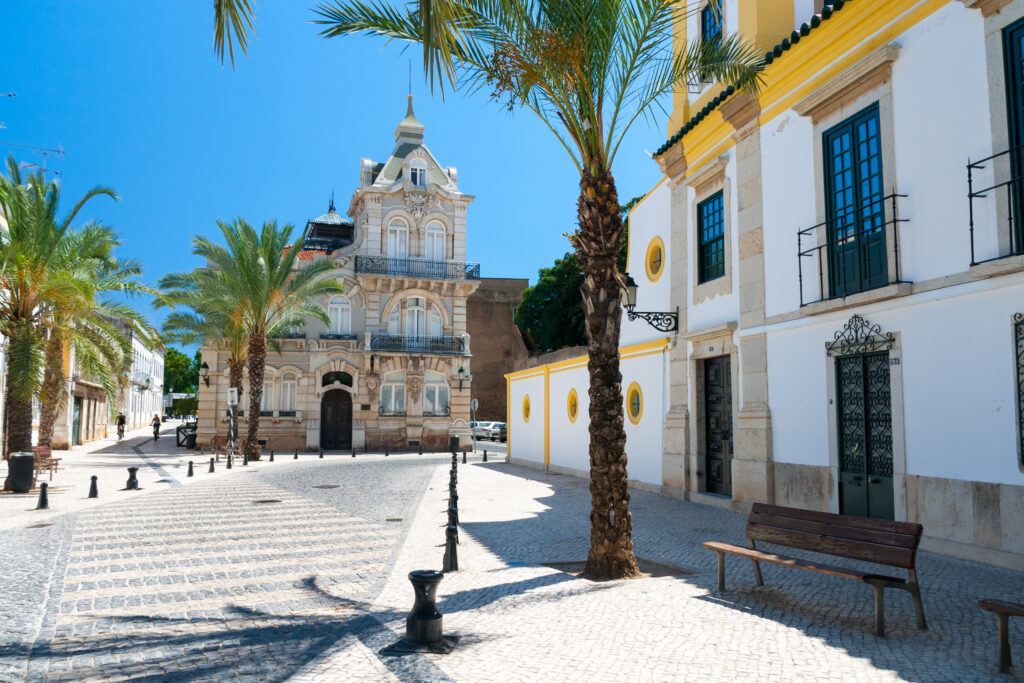
The capital of the Algarve, Faro is a lively city with a rich history and vibrant culture. During your visit to Faro, you can explore the old town, surrounded by medieval ramparts and home to many historic buildings, such as Faro Cathedral, the Episcopal Palace and the Church of São Francisco. We also recommend a visit to the Faro Municipal Museum, which houses a collection of art and artifacts from the region, ranging from Roman times to the present day. Finally, Faro is famous for its local cuisine, which includes fresh seafood, rice dishes and traditional pastries.
Tempted? Discover our article dedicated to What to do in Faro, Portugal? The 11 must-sees.
2. Sagres
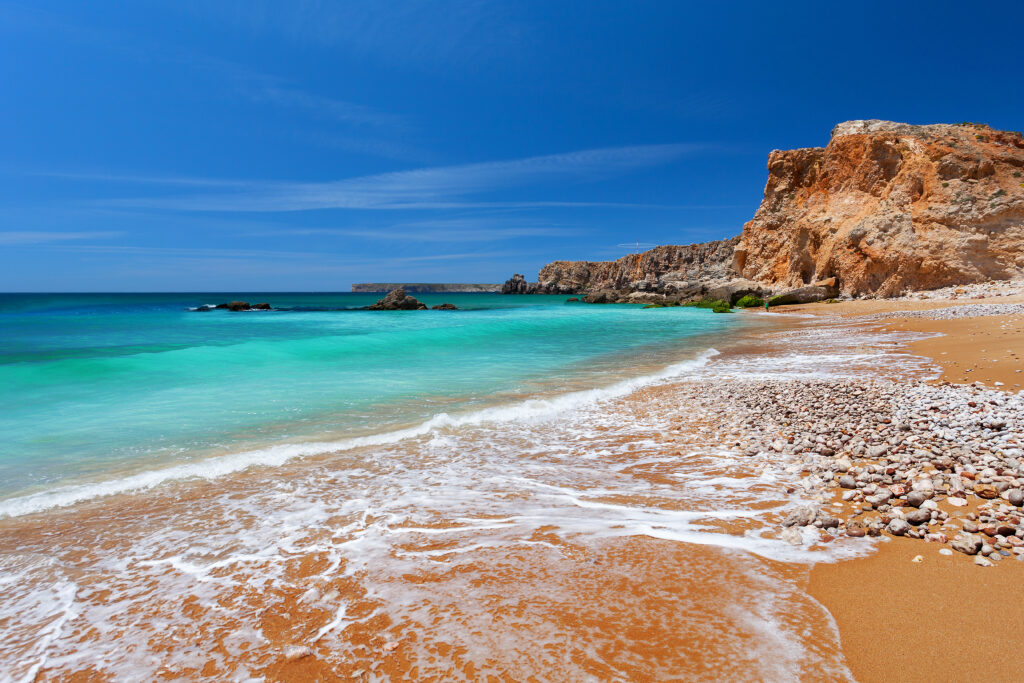
Sagres is a coastal town at the south-western tip of the Algarve, known for its spectacular cliffs, golden sandy beaches and fascinating maritime history. During your visit to Sagres, you can visit Fort Sagres, a 15th-century fortress built on a rocky promontory overlooking the Atlantic Ocean. Your stay will also be an opportunity to discover Cape St. Vincent, the most south-westerly point of continental Europe, offering a breathtaking view of the Atlantic Ocean. Sagres is also famous for its golden sandy beaches, such as Tonel beach and Mareta beach.
3. Lagos
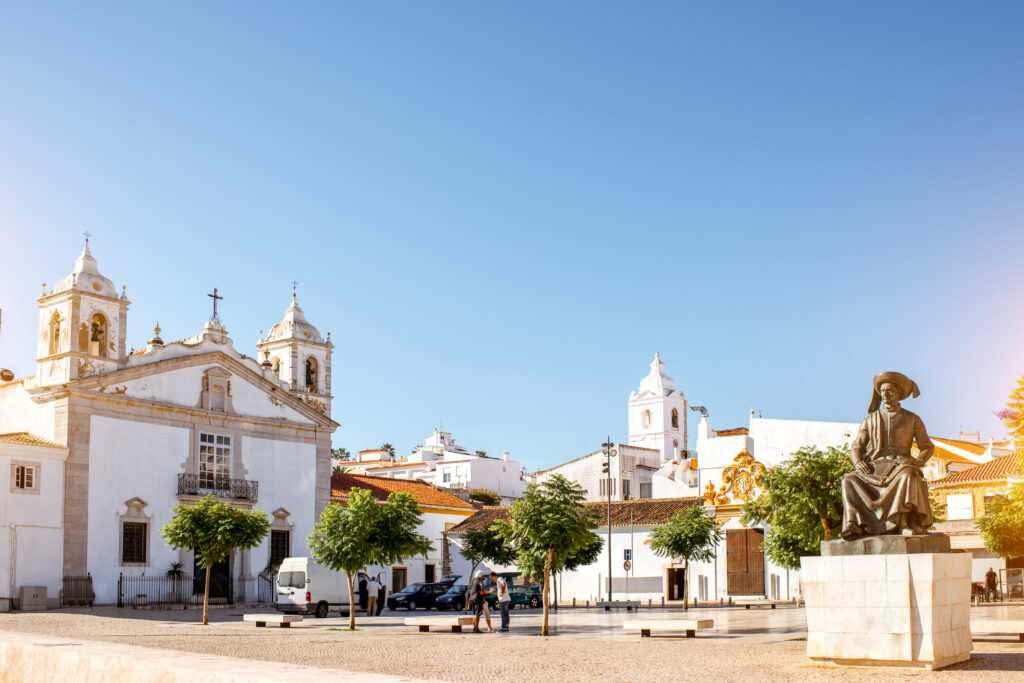
Lagos is one ofPortugal's most beautiful places to visit. During your visit to Lagos, you can explore the old town, a labyrinth of narrow cobbled streets lined with whitewashed houses, stores and restaurants, and take the opportunity to discover the Santo António church, the Lagos regional museum and the city walls. Fancy a little idleness? Lagos' magnificent beaches, such as Dona Ana beach, Camilo beach and Meia Praia beach, await you to swim in the crystal-clear waters or enjoy water sports such as kayaking and scuba diving.
Lagos is also famous for its spectacular sea caves, such as the Benagil cave, which you can explore by boat or kayak.
4. What to do in the Algarve Visit the caves
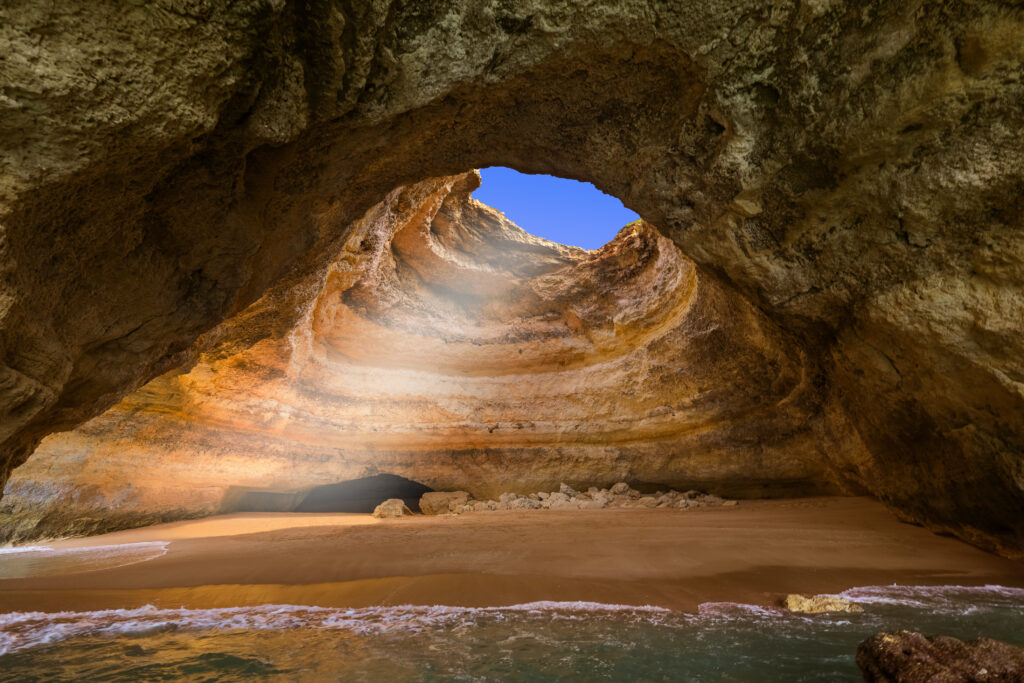
The Algarve's sea caves are one of the region's most spectacular attractions, offering visitors breathtaking views of unique rock formations and crystal-clear waters. The caves are accessible by boat or kayak, and there are many options for guided tours. Don 't miss the Grotte de Benagil, one of the Algarve's most famous caves, located near Benagil beach, where you can admire the spectacular rock formations and the sunlight filtering through the cave ceiling. We also recommend the Grotte de l'Algar Seco, another popular cave, located near the town of Carvoeiro, and the Grotte de Capitão, a sea cave located near the beach of Praia da Marinha with a breathtaking view of the Algarve coastline.
5. Albufeira
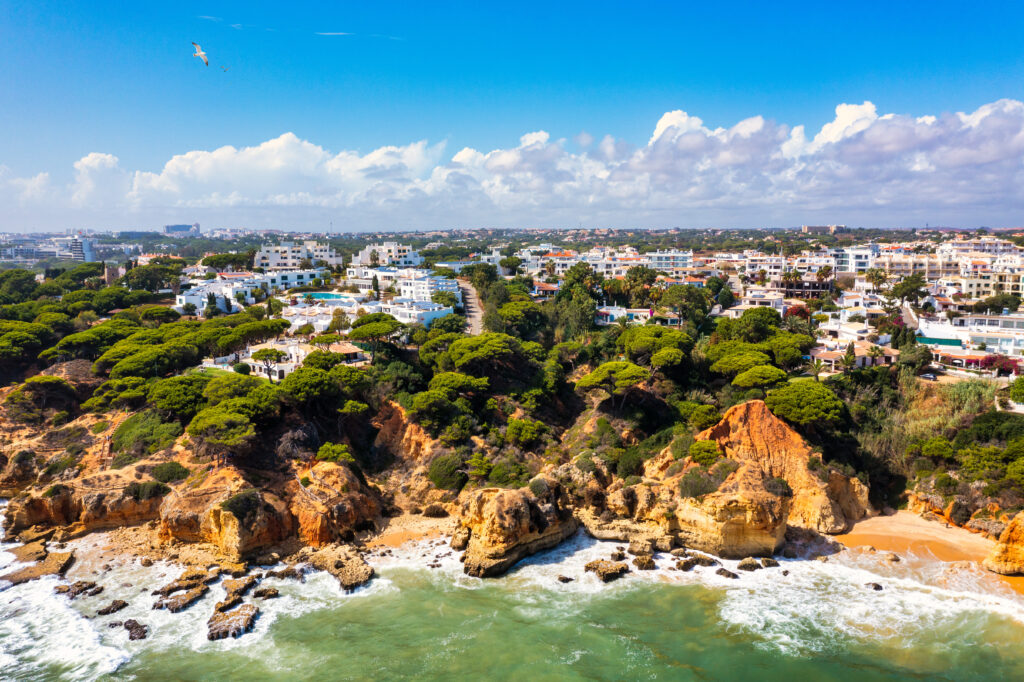
Albufeira is a lively coastal town in the Algarve region of southern Portugal. Take advantage of your getaway to discover the Church of São Sebastião, the Municipal Museum of Archaeology and the city walls, or relax on the city's beaches, such as Praia dos Pescadores, Praia da Oura and Praia do Peneco. Albufeira is also known for its lively nightlife, with numerous bars, clubs and restaurants offering a variety of live music and entertainment. Finally, history buffs can visit Paderne Castle, a medieval castle located close to the town, offering a beautiful view of the surrounding countryside.
6. Olhão
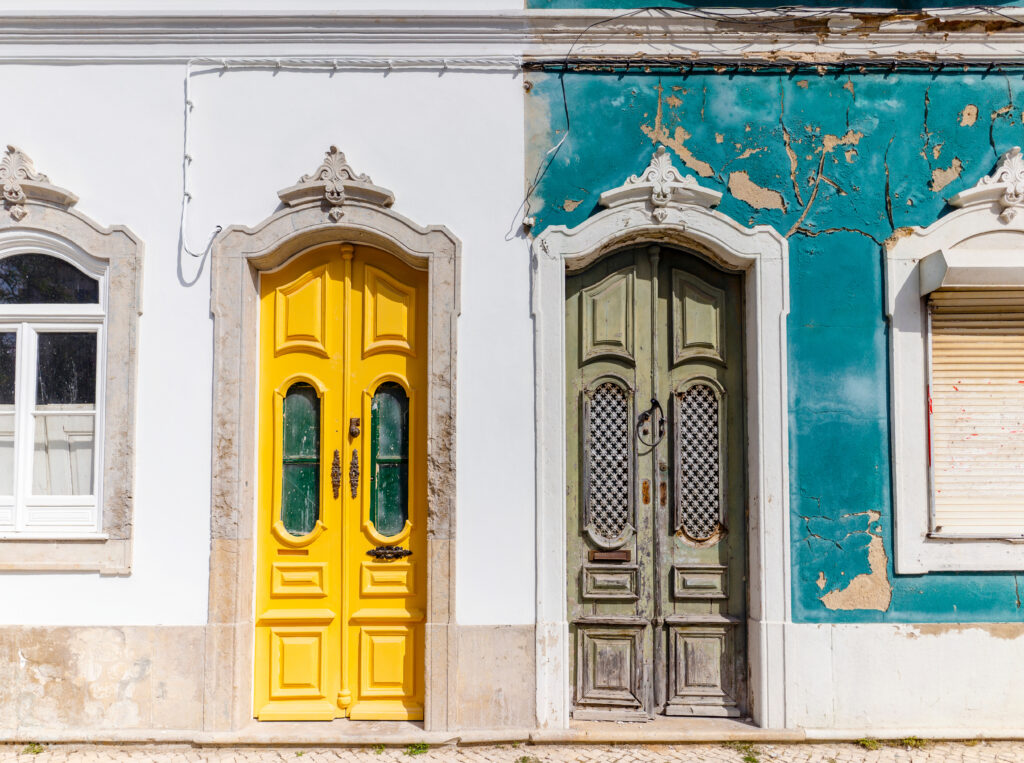
With its 28,000 inhabitants, Olhão is the Algarve's largest fishing port. You'll be pleasantly surprised by the warm welcome of the locals, as well as by the typical architecture of the town, which resembles a casbah with its white houses topped with terraces, where fish, figs and linen are dried, and its winding streets. In the mornings, the market is bustling with activity, and you can admire the spectacle of vendors grilling octopus. But what really makes Olhão special isits proximity to the wild beaches of the islands of Armona, Culatra and Farol, a must for nature lovers.
7. What to do in the Algarve Visit Monchique
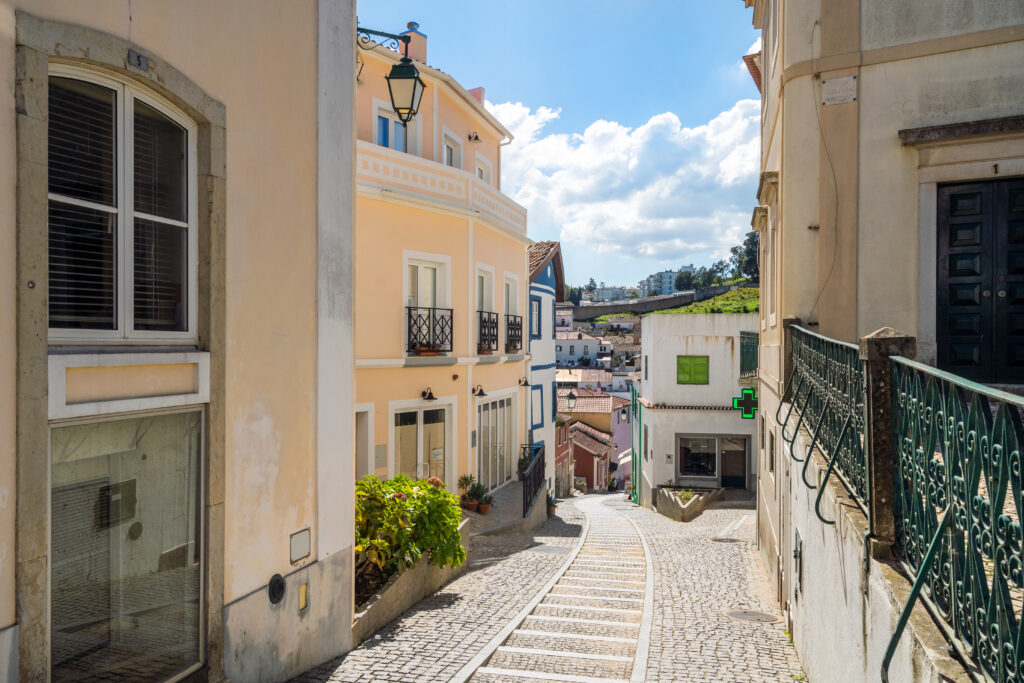
Welcome to Monchique, a charming mountain town known for its hot springs, mountain scenery and panoramic views of the Algarve coast. During your visit to Monchique, you can stroll through the town's narrow cobbled streets, lined with whitewashed houses and flower-filled gardens, and relax in the hot springs of Caldas de Monchique. Not far away, the ruins of the Nossa Senhora do Desterro monastery, never rebuilt after the earthquake, sit high above the village and offer an atypical visit.
Food lovers can sample local specialities such as Monchique ham, Monchique honey and medronho liqueur, a local alcoholic beverage made from medronho berries.
8. Silves
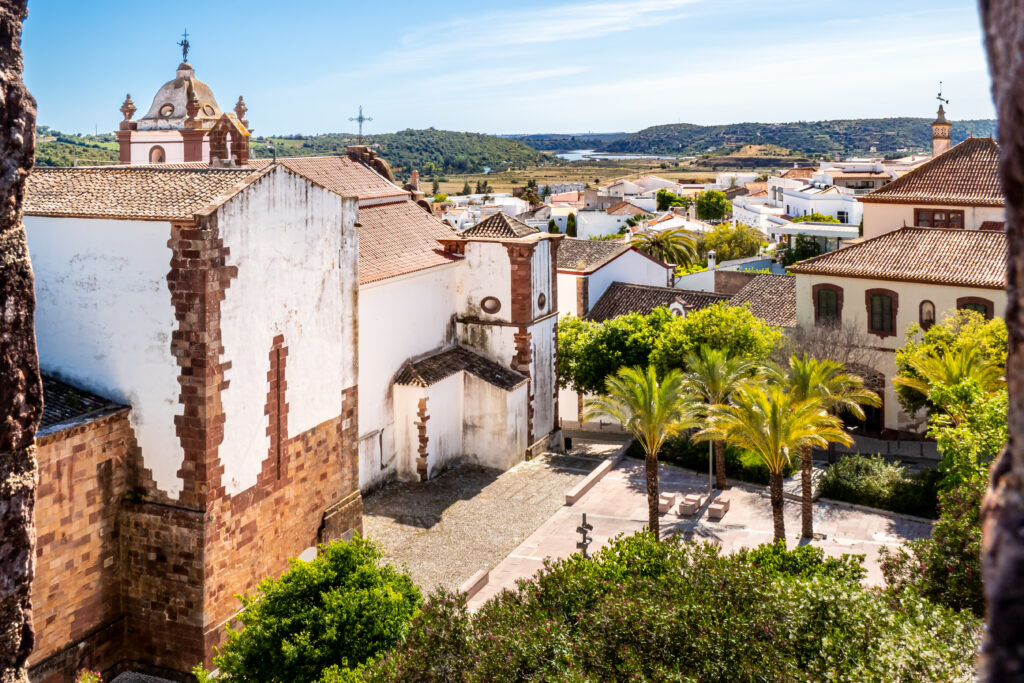
Silves is a historic town that was once the capital of the Moors in the Algarve and rivaled Lisbon in terms of power until the 14th century. The town was also known for its artistic and cultural activity, earning it the title of cradle of Arabo-Andalusian poetry. Few traces of this occupation remain, but you can see the medieval red-brick castle, which was restored in the 1940s and offers a breathtaking view of the city and the banks of the River Arade. Take advantage of your stay to see Silves' incredible Gothic cathedral, built on the site of a former mosque.
9. What to do in the Algarve Visit Alte
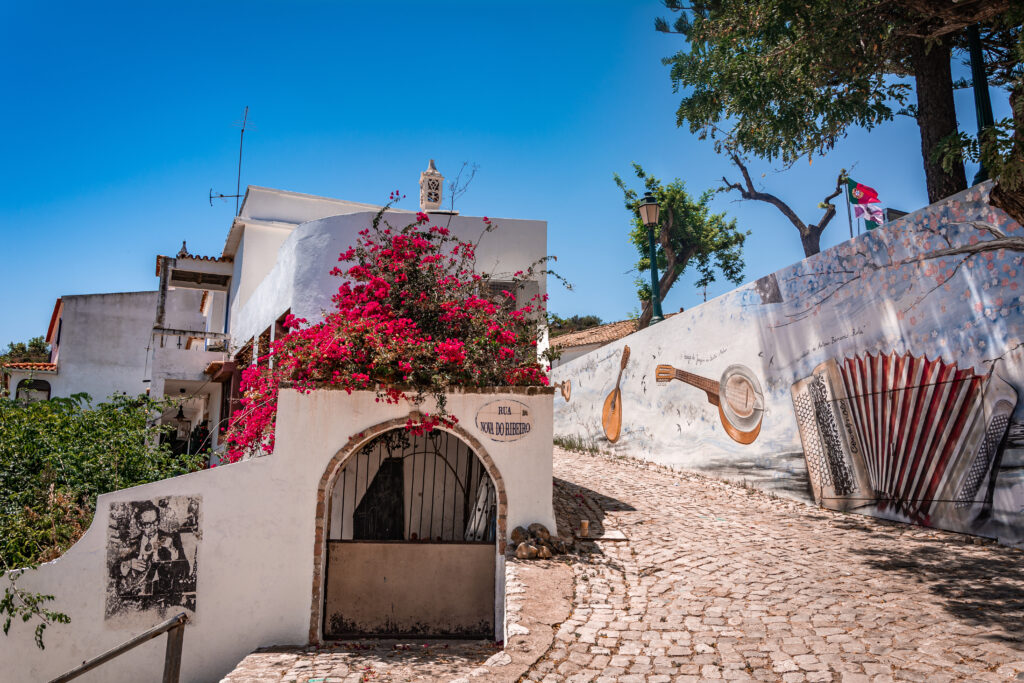
Alte is a peaceful, picturesque village some 20 kilometers from the coast and the hustle and bustle of tourism. Surrounded by hills, this charming hamlet is considered one of the most typical in the region, with its traditional chimneys and whitewashed houses. The Alte River, which once flowed through the village, turned the wheels of the village's nine mills. Today, only the Aboboda mill is visible. Alte is also famous for being the birthplace of the poet Cândido Guerreiro, and the village walls bear the memory of the Portuguese playwright and his most emblematic poems. You can also visit the small Queda do Vigario waterfall, an ideal place to cool off and enjoy the natural beauty of the area.
10. Sunbathing on the beach
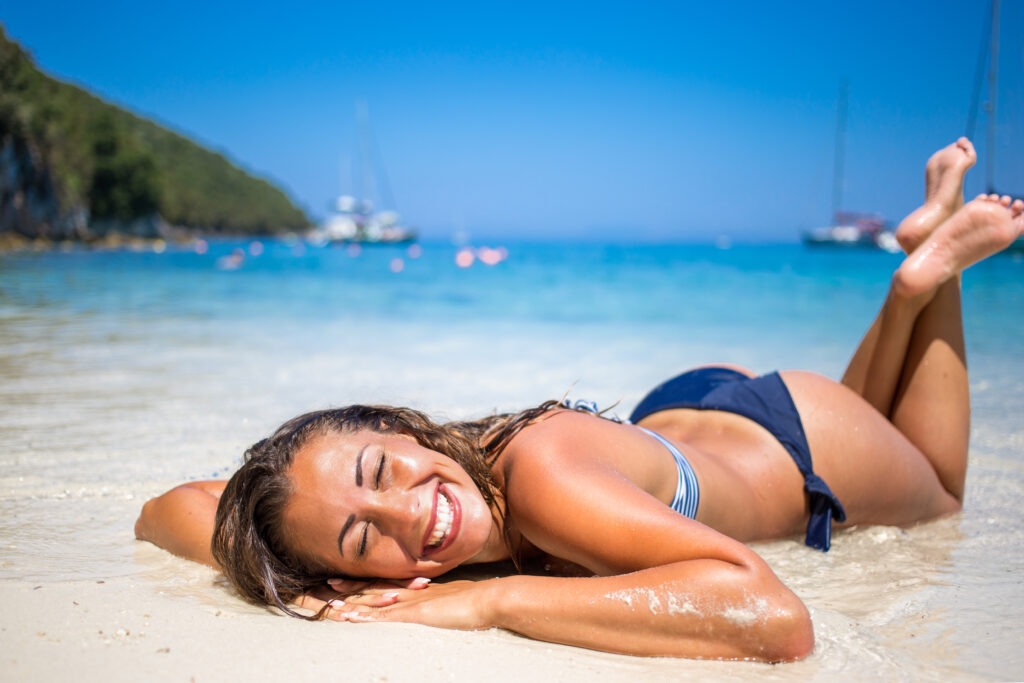
This is your chance to sunbathe on some of Europe's most beautiful beaches! The Algarve is famous for its magnificent golden sandy beaches and crystal-clear waters, making it an ideal destination for sunbathers. With over 200 beaches along the coast, there's something for everyone, from lively beaches to secluded coves.
The Algarve's most popular beaches are Praia da Rocha, Praia da Marinha, Praia do Camilo and Praia da Falesia. Here you'll find sun loungers, parasols and beach bars, as well as water sports such as windsurfing, kayaking and scuba diving.
For those seeking quieter, more secluded beaches, there are many hidden coves along the coast, such as Praia do Barranco, Praia da Dona Ana and Praia do Carvalho. These beaches offer a more peaceful atmosphere and stunning views of cliffs and sea caves.
11. Discover the sandy beaches and lagoons of the Ria Formosa
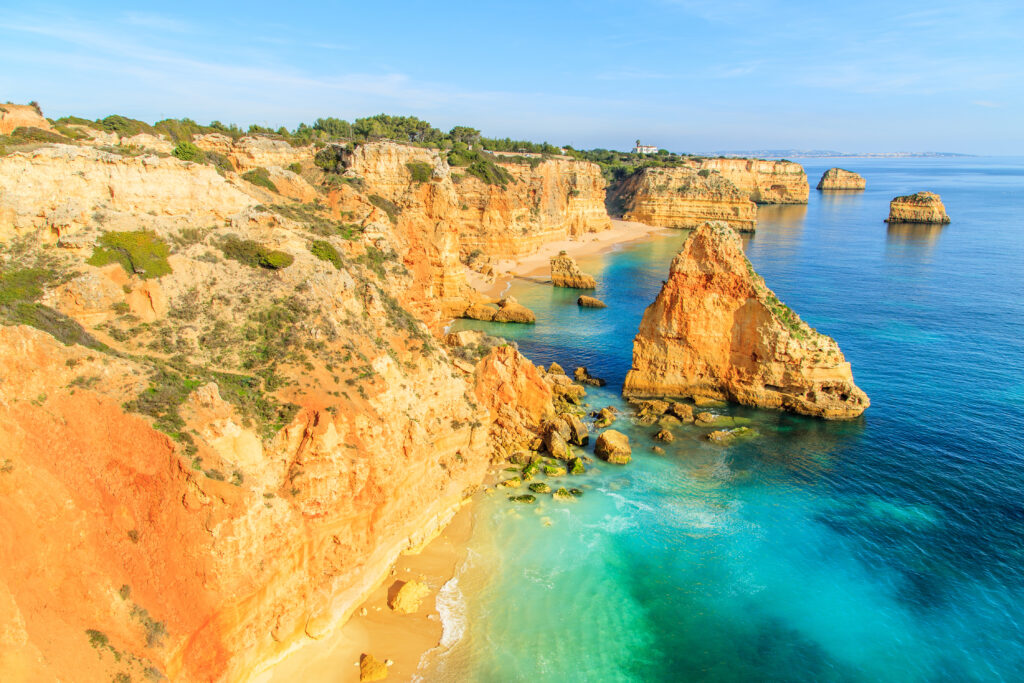
The Ria Formosa is a natural park famous for its magnificent sandy beaches and crystal-clear lagoons. We recommend visiting the islands and lagoons of the Ria Formosa by boat, kayak or paddleboard to discover a variety of birds and native plants. The Ria Formosa's most popular beaches are Praia de Faro, Praia da Ilha Deserta and Praia da Culatra, each offering a unique atmosphere and breathtaking views of the lagoons and surrounding islands.
You can also rent bicycles to explore the nature reserve's trails and discover the region's traditional fishing villages.
12. What to do in the Algarve Visit Ferragudo
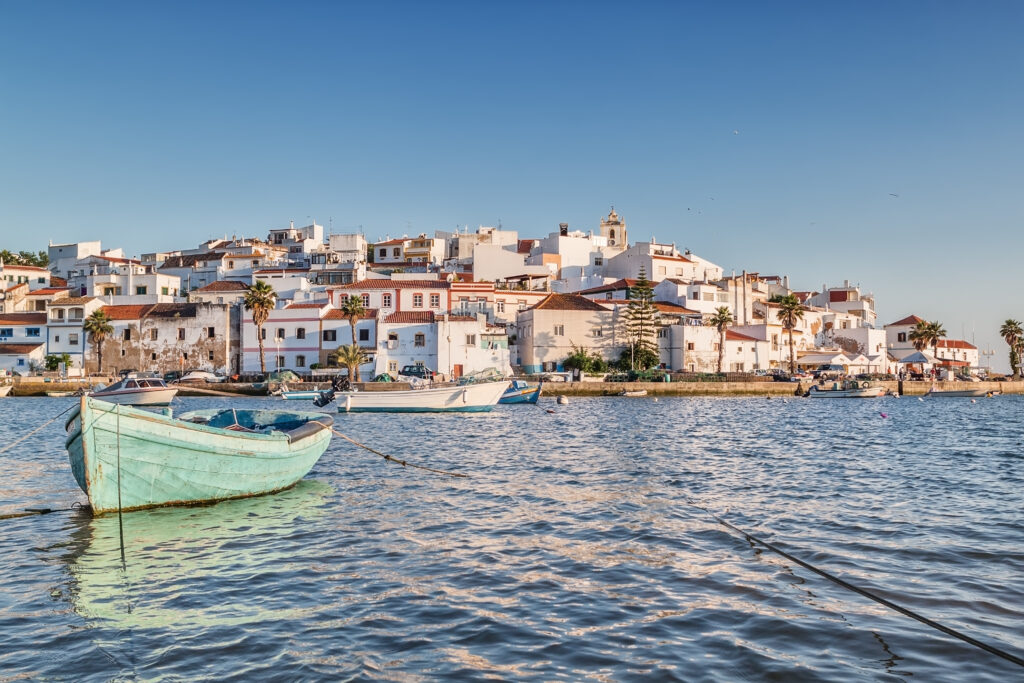
Looking for an authentic village? Welcome to Ferragudo, a charming fishing village on the west coast of Portugal's Algarve. With its narrow cobbled streets, whitewashed houses and bustling fishing port, Ferragudo isan ideal destination for those seeking to discover the authenticity of the region.
We recommend exploring the village's historic center to discover its historic buildings, such as the church of Nossa Senhora da Conceição and the fort of São João do Arade. The village's narrow streets are lined with local craft stores, restaurants and cafés and offer a lively, welcoming atmosphere.
13. Loulé
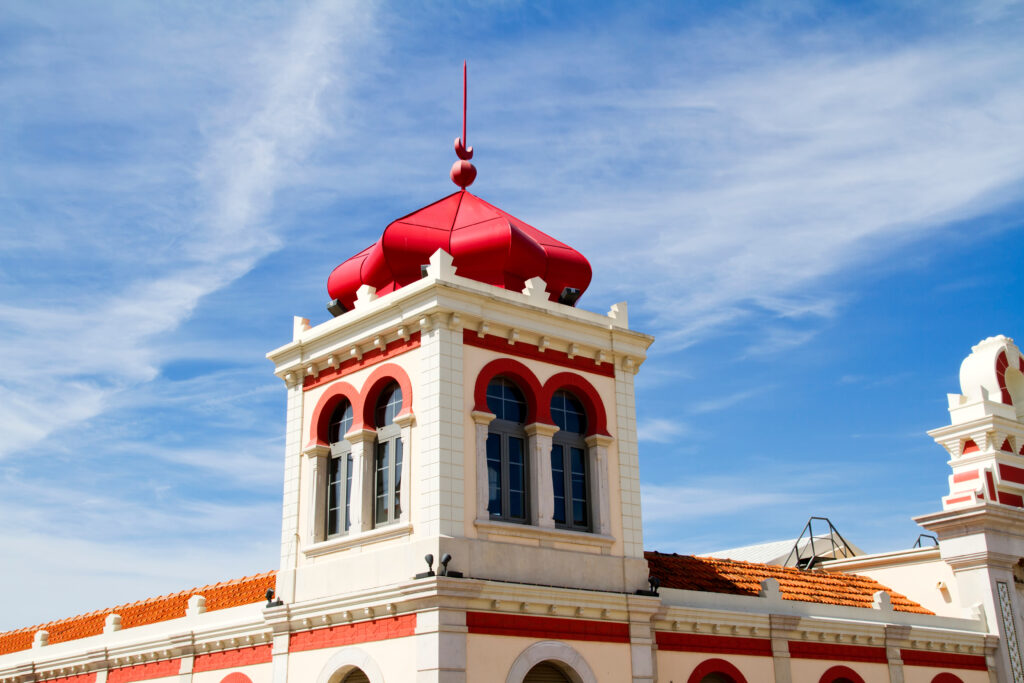
Loulé is a charming little market town with a strong tradition of craftsmanship inherited from the Moorish period. Don 't miss its huge market (Saturday mornings until 1pm), which attracts all the Algarve's traders. You'll find pottery, leather, shoes, ceramics, fruit, flowers, fish, honey and organic produce... It's the kind of market you'd expect to find, with its authentic atmosphere and great bargains!
Finally, golf enthusiasts can also take advantage of the many golf courses in the region, such as the Quinta do Lago golf course and the Vale do Lobo golf course, which offer spectacular views of the surrounding countryside.
14. What to do in the Algarve Visit Aljezur
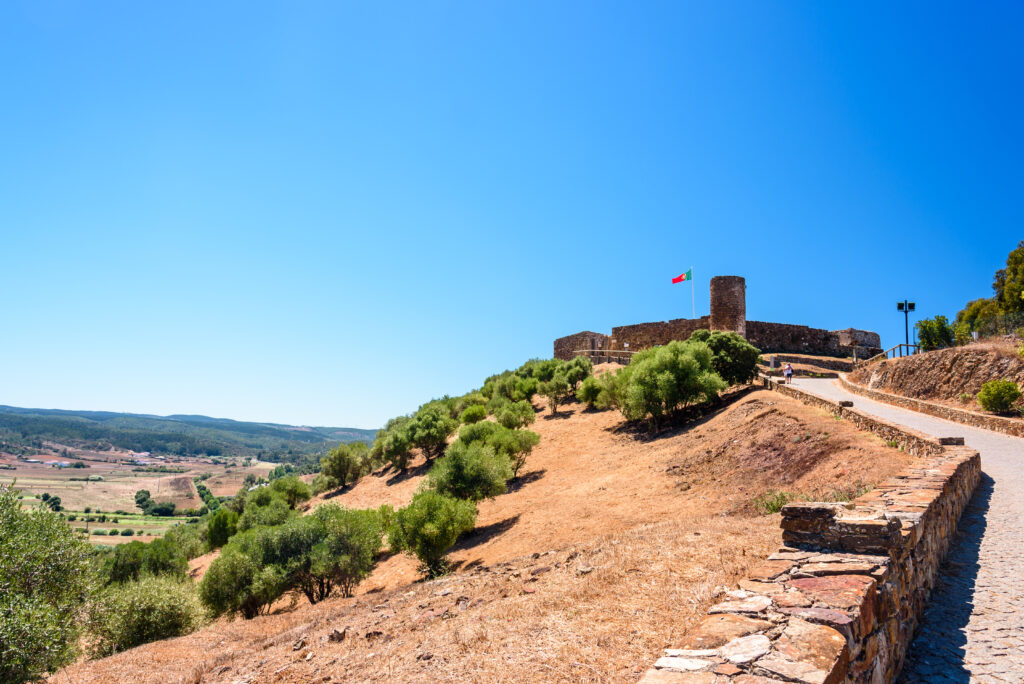
Aljezur is a beautiful village dominated by a ruined Moorish castle dating back to the 10th century. The town was once an important agricultural center, but was largely destroyed by the earthquake of 1755. If we recommend this stopover, it's mainly because Aljezur is situated between sumptuous, unspoilt beaches, veritable jewels of the Vicentina coast. You'll find a palpable joie de vivre here. Wander through the steep streets, discovering the sparkling white Arab-influenced houses and the charming museums that reveal the little secrets of history.
15. Follow the Rota Vicentina
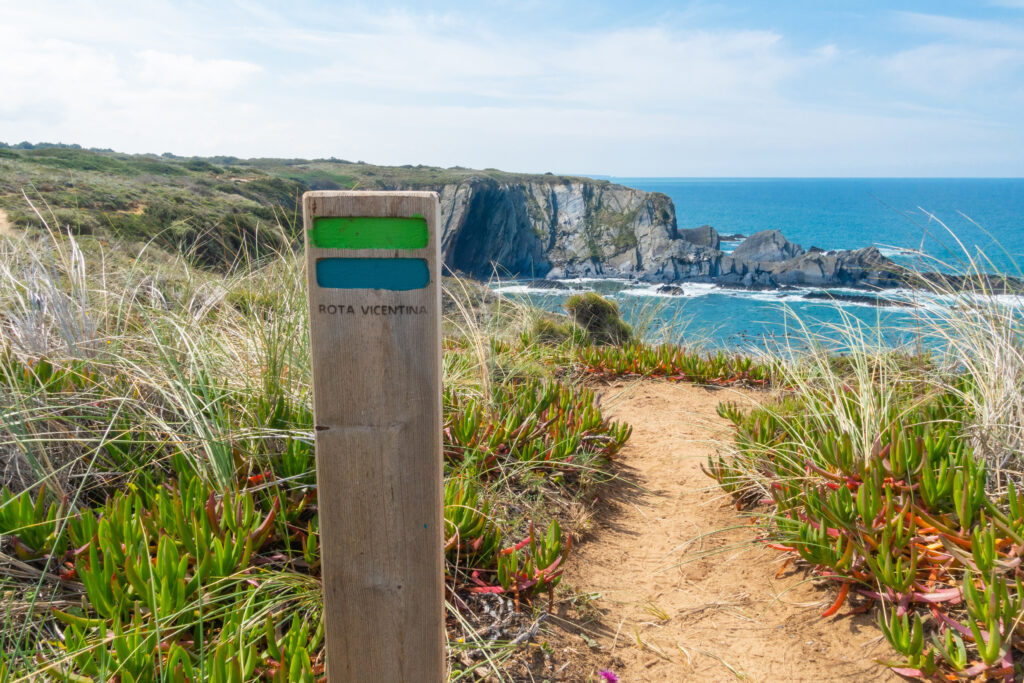
The Algarve is one of the best road-trip destinations in Europe. It's an excellent way to fulfill every desire, all under the generous sunshine of this region in southern Portugal. The Rota Vicentina is a spectacular hiking trail that crosses the west coast of the Algarve, offering breathtaking views of the region's cliffs, beaches and unspoilt natural landscapes. With over 450 kilometers of marked trails, the Rota Vicentina is an ideal destination for hiking and nature lovers.
Choose from a variety of hiking itineraries, ranging from short strolls to multi-day treks. The trails pass through a variety of landscapes, including pine forests, sand dunes, steep cliffs and secluded beaches, as well as the region's traditional fishing villages, such as Odeceixe and Zambujeira do Mar.
16. What to do in the Algarve Visit Alvor
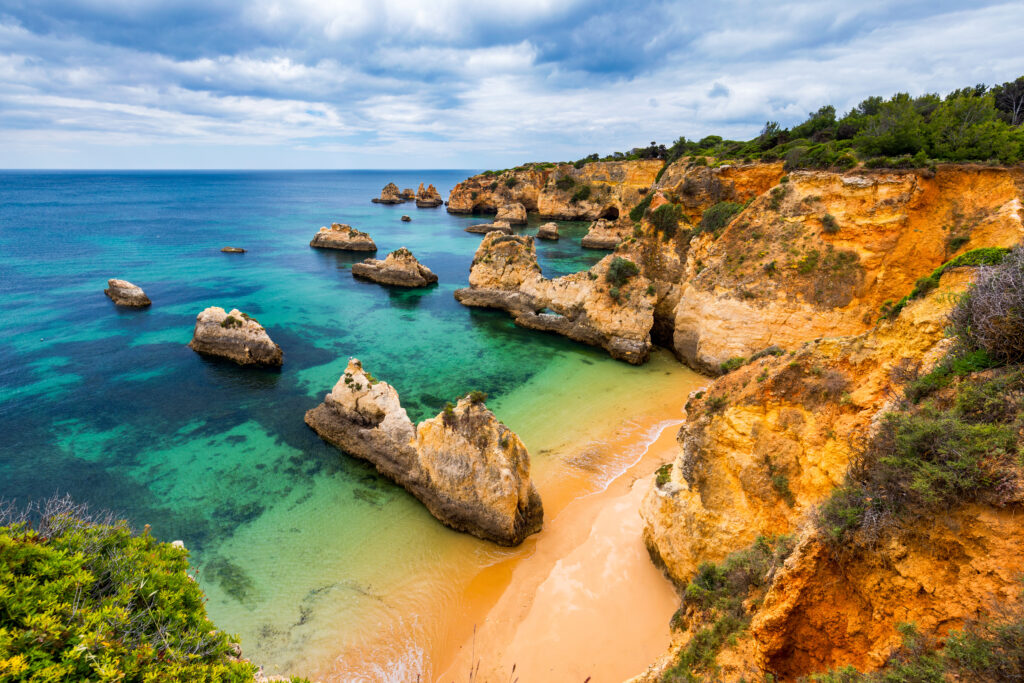
Just 4 km from Portimão, the charming village ofAlvor is known for its small marina on the banks of the ria Alvor, renowned for its seafood restaurants. Take a stroll through the sloping streets of the town center, lined with traditional fishermen's houses with white facades. Soak up the authentic, well-preserved atmosphere, watch fishermen mend their nets in front of their huts and shellfish gatherers early in the morning. You'll see that Alvor embodies the idyllic image of Portugal, with its cobbled streets, whitewashed houses and traditional fishing atmosphere.
17. Portimão
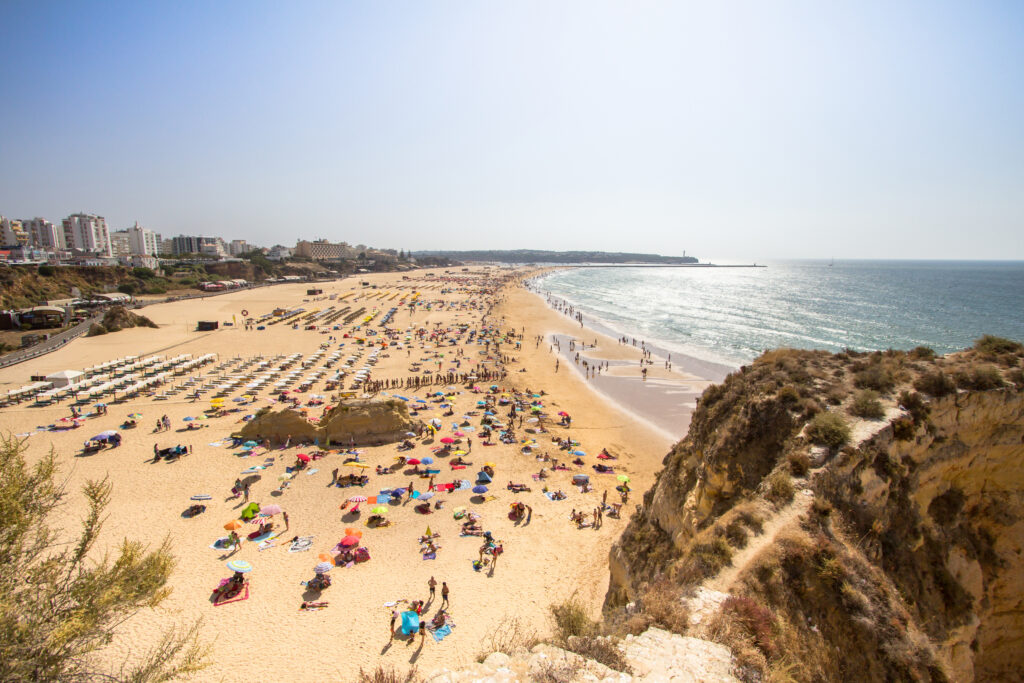
With its marina, sandy beaches and lively city center, Portimão is an ideal destination for vacationers. In the city's historic center, don't miss the Church of Nossa Senhora da Conceição and the Portimão Museum.
Portimão is also famous for its magnificent beaches, such as Praia da Rocha and Praia do Vau, which offer crystal-clear waters for windsurfing, jet-skiing and scuba diving. Portimão is also an ideal starting point for boat cruises along the coast to discover sea caves and hidden coves.
18. What to do in the Algarve Visit Carvoeiro
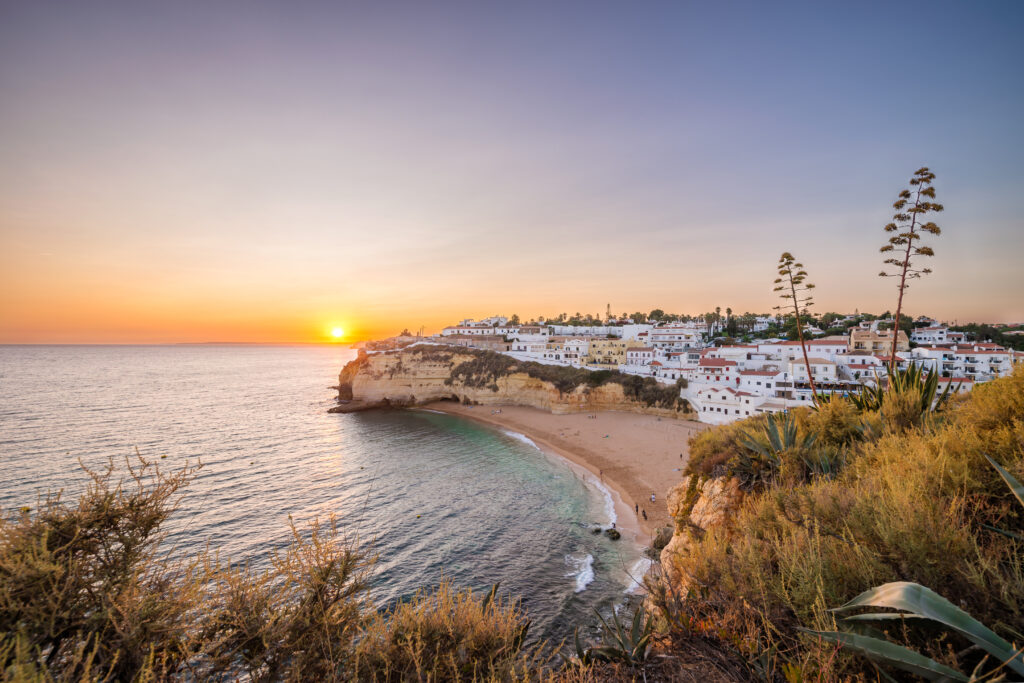
The beaches in and around Carvoeiro are breathtaking. The central beaches of Praia Paraiso and Praia de Carvoeiro are the best known, but we especially recommend heading south to discover the spectacular cliffssculpted by the waves along the coast. It would be a shame to miss such a natural spectacle. The Benagil cave, one of the most photographed in the country, is accessible by boat from Carvoeiro and is well worth a visit.
Are you a hiking enthusiast? Coastal paths have been laid out along the beaches, offering beautiful walks with breathtaking sea views.
19. The " Percurso dos 7 Vales Suspensos" hike
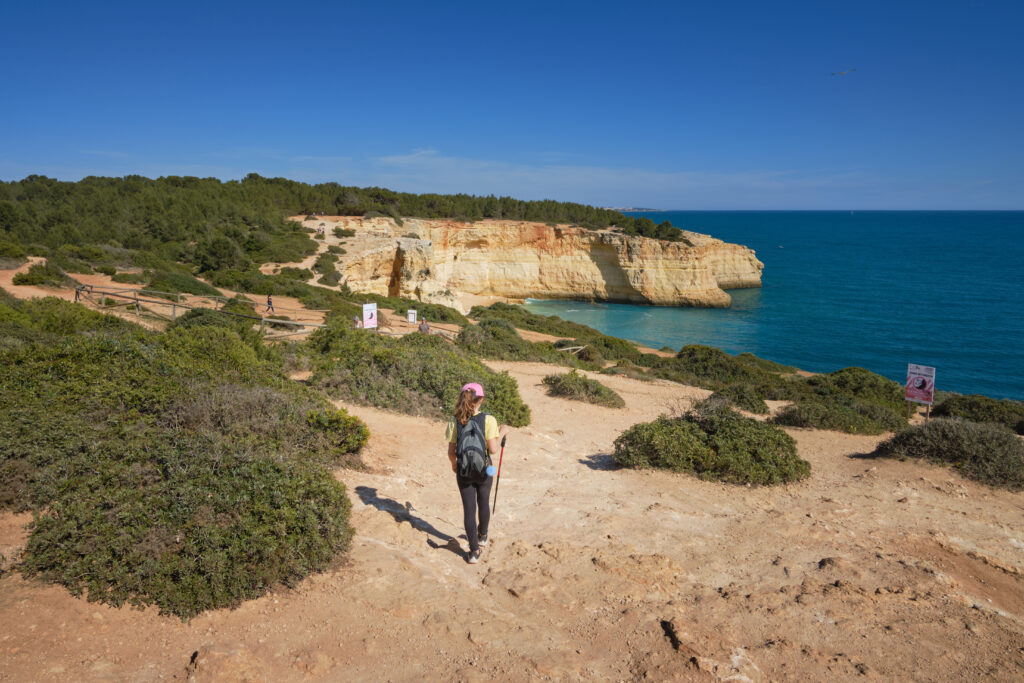
Your stay in the Algarve is an opportunity to enjoy one of the most beautiful hikes in the world! The "Percurso dos 7 Vales Suspensos" hike is a must for nature and hiking enthusiasts in the Algarve. Located near the town of Lagoa, this 11.5 km hike offers spectacular views of cliffs, beaches and the seven hanging valleys that give the hike its name. You can follow marked trails through hills and valleys, past pine and eucalyptus forests, streams and waterfalls. Panoramic vantage points along the way offer breathtaking views of the region's cliffs and beaches.
The "Percurso dos 7 Vales Suspensos" hike is considered moderate to difficult, with steep slopes and staircases in places.
What to visit in the Algarve in 7 days?
The Algarve is a region rich in tourist attractions and it can be difficult to decide what to visit in just 7 days. However, here's a suggested itinerary to help you make the most of your stay in the Algarve:
Day 1: Arrive and settle into your accommodation. Spend the day relaxing and exploring the surrounding area.
Day 2: Visit Faro, the capital of the Algarve. Discover the walled old town, Faro Cathedral and Faro Municipal Museum. You can also stroll the pedestrian streets and stop off at the many cafés and restaurants.
Day 3: Head for the Algarve's west coast to discover golden sandy beaches and spectacular cliffs. Stop off at Praia da Rocha, Praia do Camilo and Praia da Marinha. You can also visit the Benagil cave, one of Portugal's most beautiful sea caves.
Day 4: Explore the Algarve hinterland , visiting the charming villages of Silves, Monchique and Alte. Discover the medieval castles, Baroque churches and natural hot springs of Monchique.
Day 5: Head for the Algarve's east coast to discover the fine sandy beaches and lagoons of the Ria Formosa. Stop off at Praia de Barril, Praia da Terra Estreita and Praia da Ilha Deserta. You can also visit the Ria Formosa Natural Park, one of Europe's most important nesting sites for migratory birds.
Day 6: Visit Lagos, one of the Algarve's most beautiful towns. Discover the old walled town, the church of Santo António and the Lagos Regional Museum. You can also stroll along the seafront promenade and stop off at the many cafés and restaurants.
Day 7: Take advantage of your last day in the Algarve to relax and do some final shopping. You can also visit a local vineyard to taste the region's wines.
Of course, this itinerary is only a suggestion and you can adapt it according to your preferences and pace of travel. We hope it will help you plan your stay in the Algarve and make the most of this beautiful region.
What to do in the Algarve with children?
The Algarve is a destination of choice for families with childrenthere are plenty of activities for children of all ages. Here are a few suggestions for things to do in the Algarve with children:
- Enjoy the region's sandy beaches. Children will love playing in the waves and building sandcastles. The most child-friendly beaches are Praia da Rocha, Praia do Vau and Praia da Luz, with their calm, shallow waters.
- Visit the region's theme parks. The Algarve is home to several theme parks, including Zoomarine, an aquatic and zoological park with dolphin and sea lion shows, and Parque Aventura, a forest adventure park with zip lines and ropes courses.
- Take a dolphin-watching boat trip. The Algarve's waters are rich in marine life, and you can take a boat trip to observe dolphins in their natural habitat.
- Visit the region's sea caves. The Algarve's spectacular sea caves can be visited by boat or kayak. Children will love exploring these mysterious caves.
- Discover the region's fishing villages. The fishing villages of the Algarve are charming and offer an authentic atmosphere. Children can discover fishing boats, nets and lobster pots.
- Visit the region's museums. The Algarve is home to several museums of interest to children, including the Sea Museum in Portimão, the Water Museum in Lagos and the Fig Museum in Silves.
All in all, the Algarve offers a wide range of child-friendly activities, from beaches and theme parks to boat trips and hikes
What are the most beautiful villages to visit in the Algarve?
The Algarve is a coastal region in southern Portugal known for its golden sandy beaches, spectacular cliffs and picturesque villages. Here's a list of the most beautiful Algarve villages to visit:
- Alte: set in the hills of the hinterland, Alte is a traditional village with cobbled streets, whitewashed houses and freshwater fountains.
- Carvoeiro: once a small fishing village, Carvoeiro is now a popular seaside resort with golden sandy beaches and spectacular cliffs.
- Ferragudo: located at the mouth of the River Arade, Ferragudo is a traditional fishing village with narrow streets and whitewashed houses.
- Lagos: a historic town with medieval ramparts, Baroque churches and golden sandy beaches.
- Loulé: a lively town with a traditional market, pedestrian streets and historic buildings.
- Monchique: set in the mountains of the hinterland, Monchique is a picturesque village with hot springs, mountain walks and panoramic views of the coast.
How to get to the Algarve
The Algarve is a region in southern Portugal, easily accessible from many European cities. Here are a few options for getting to the Algarve:
- By plane: Faro International Airport is the region's main airport, with direct flights from many European cities, including London, Paris, Amsterdam, Frankfurt and Madrid. Low-cost airlines such as Ryanair and EasyJet offer regular flights at affordable prices.
- By train: You can reach the Algarve by train from Lisbon, Portugal's capital. Journey time is around 3.5 hours. Trains depart from Lisbon-Oriente station and arrive at Faro station.
- By car: The Algarve is accessible by car from the rest of Portugal and Spain. The A2 freeway links Lisbon to the Algarve, while the A22 freeway runs along the Algarve coast.
Tempted by this selection? Take a look at our airfares now and book without delay !


